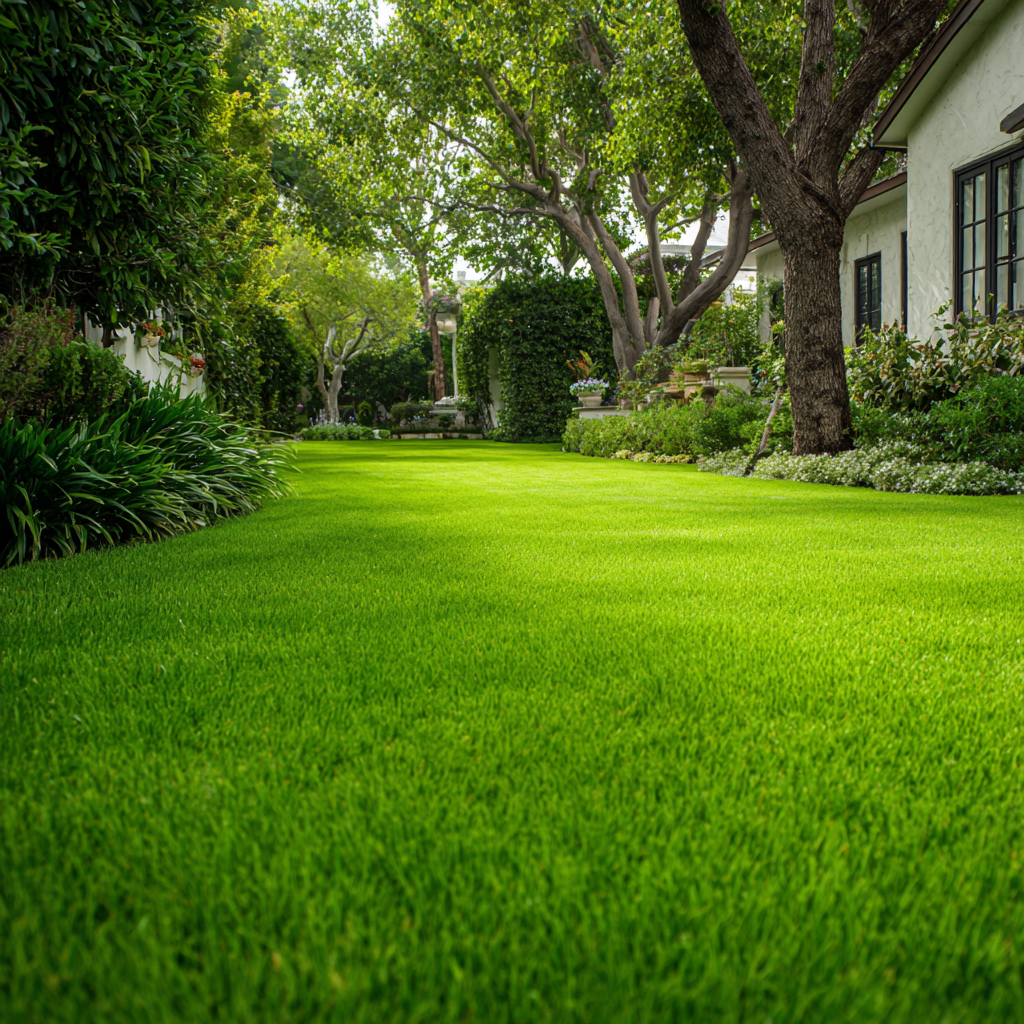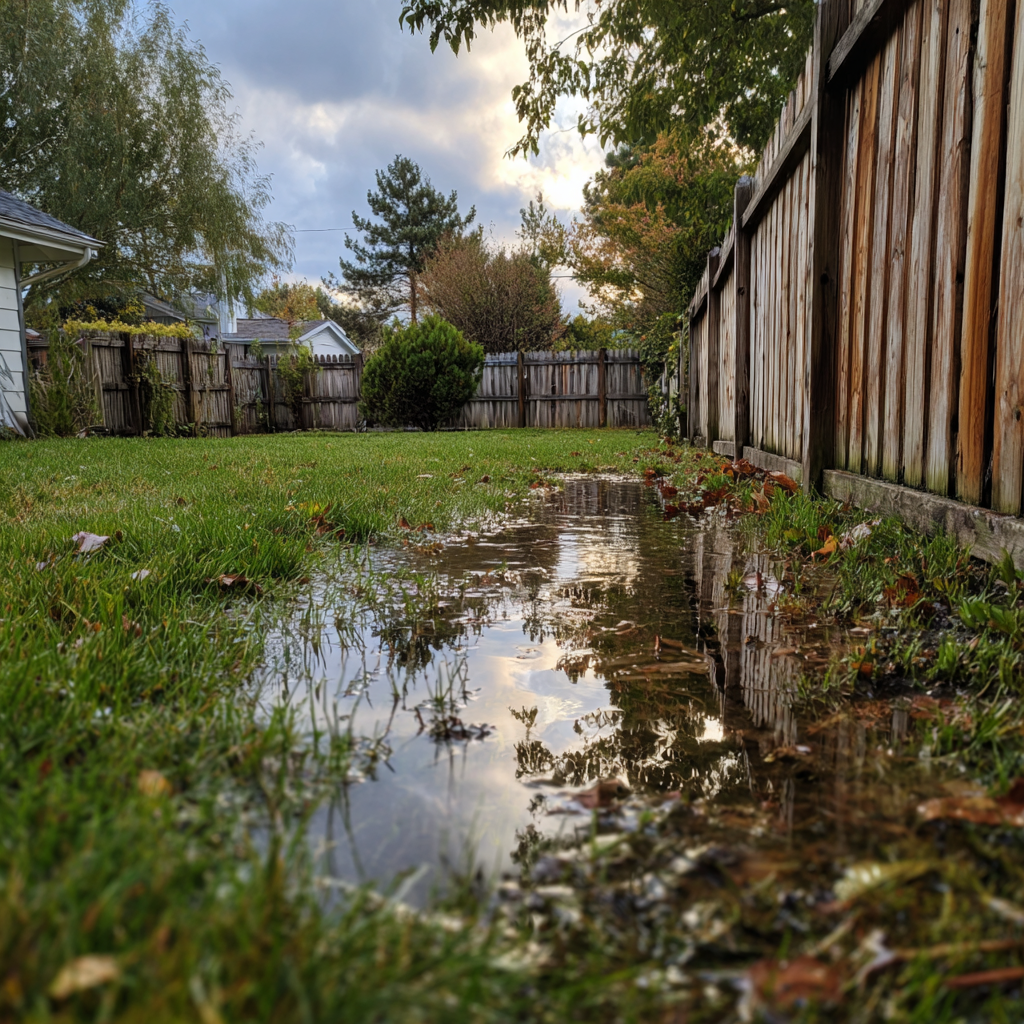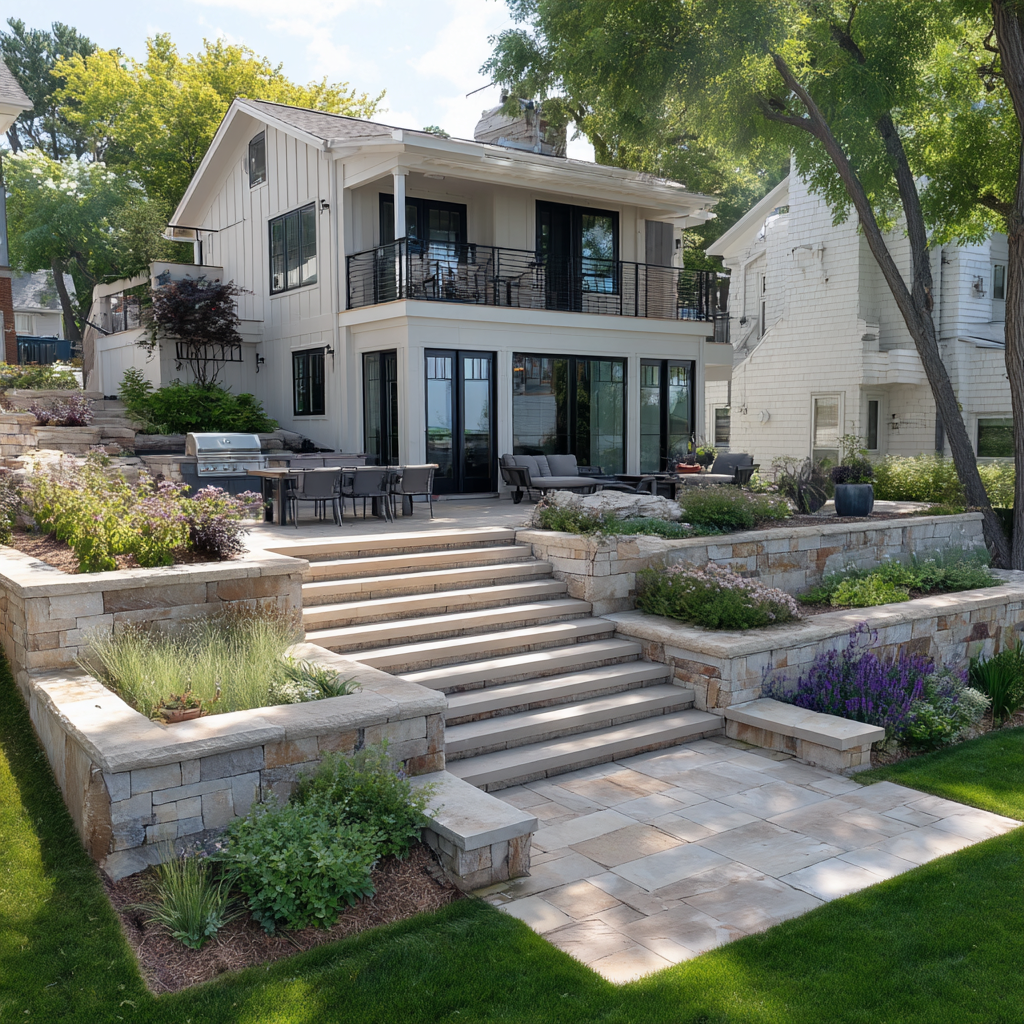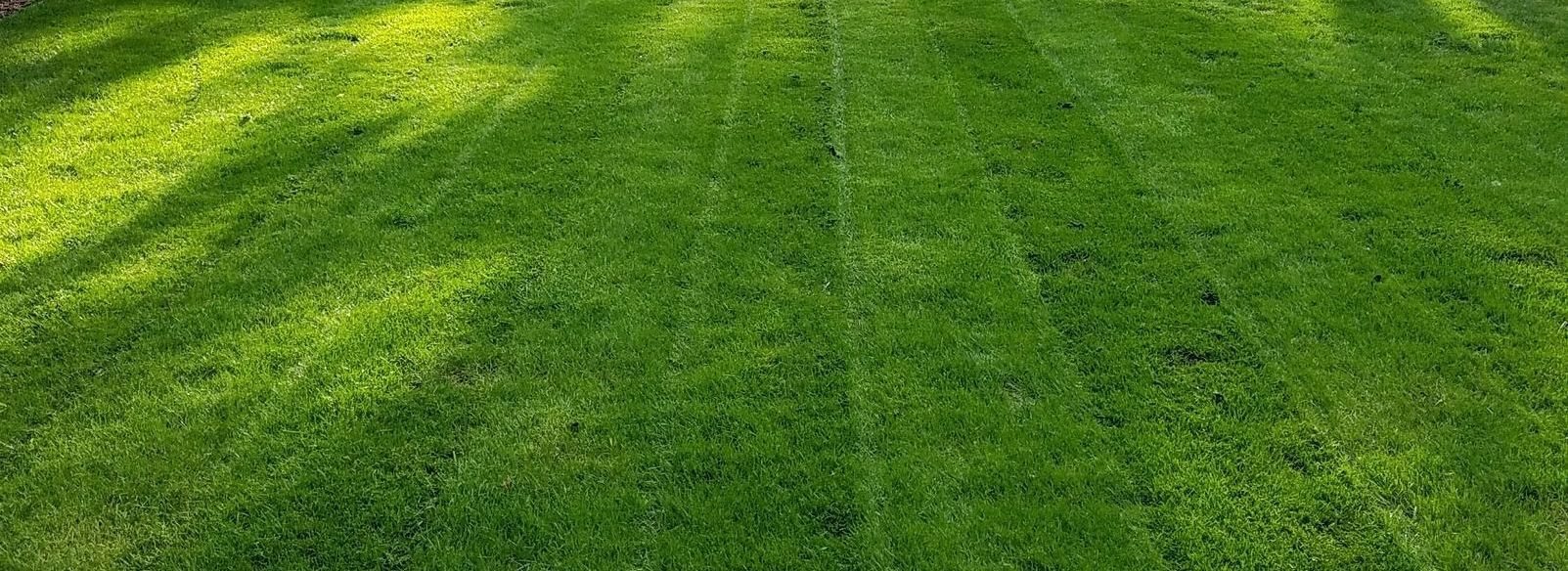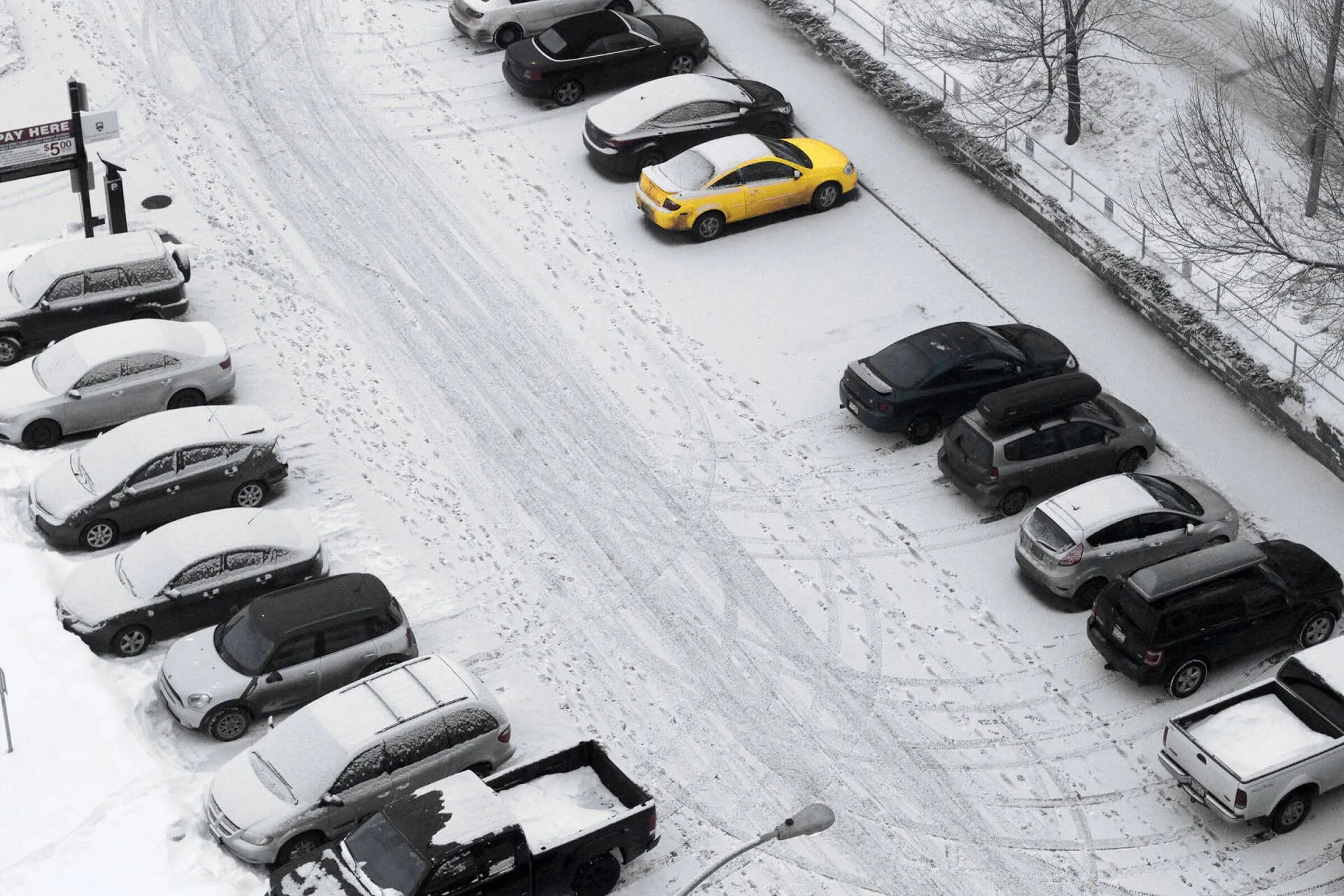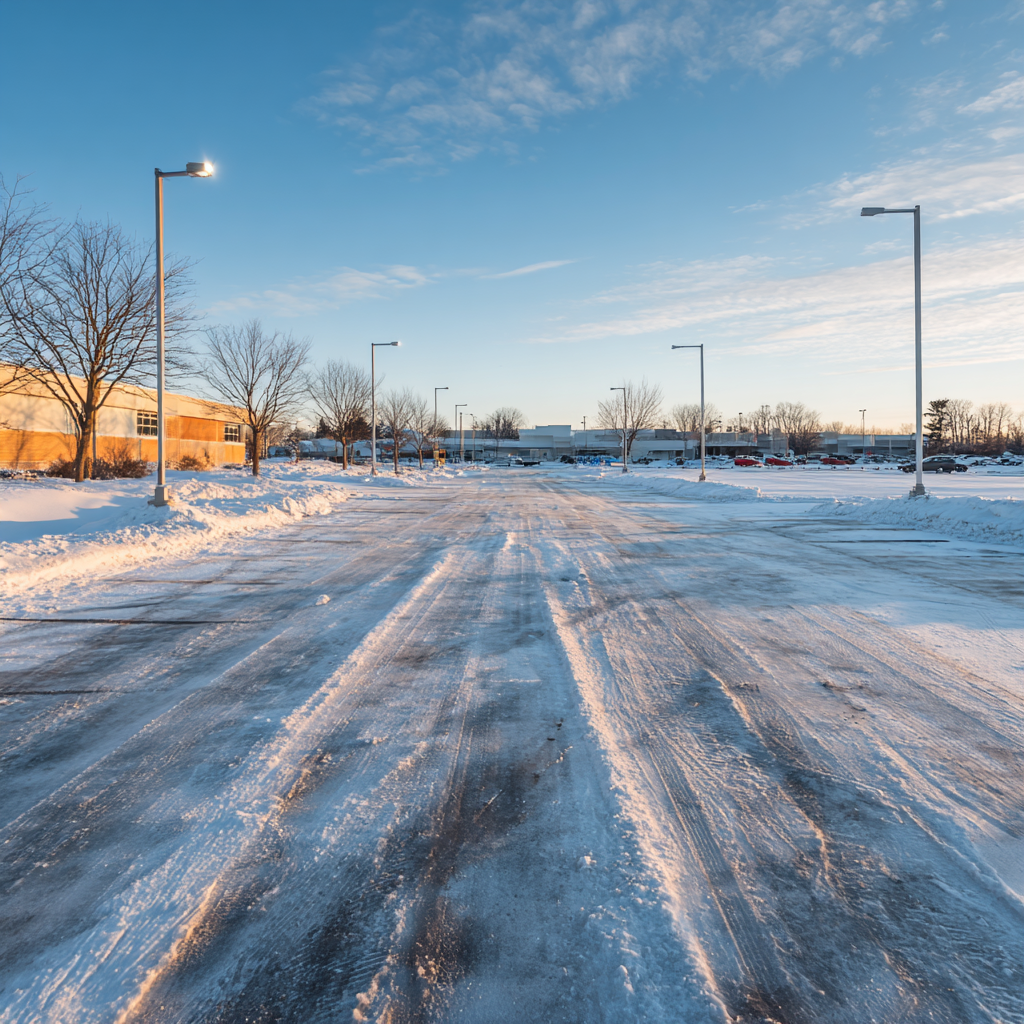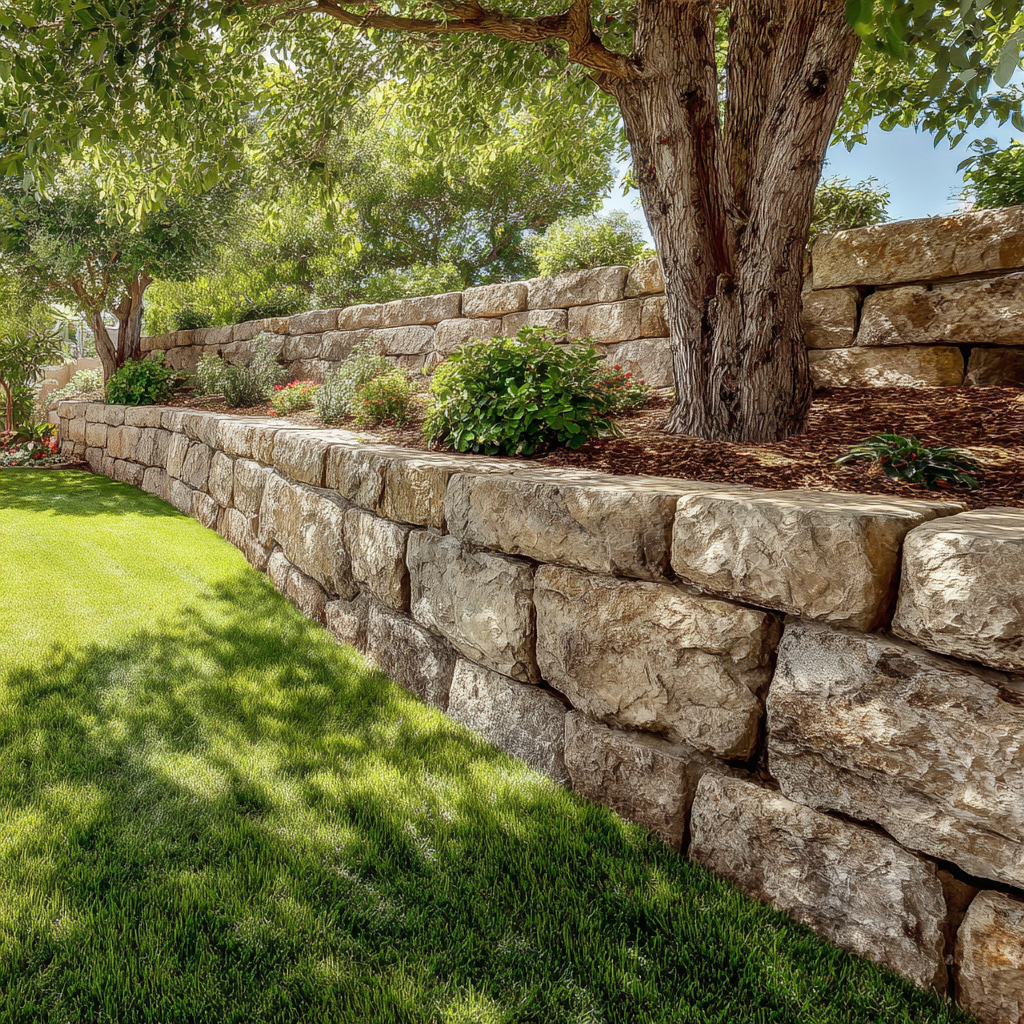Fix Drainage Problems in Your Older St. Louis Park Home for Good
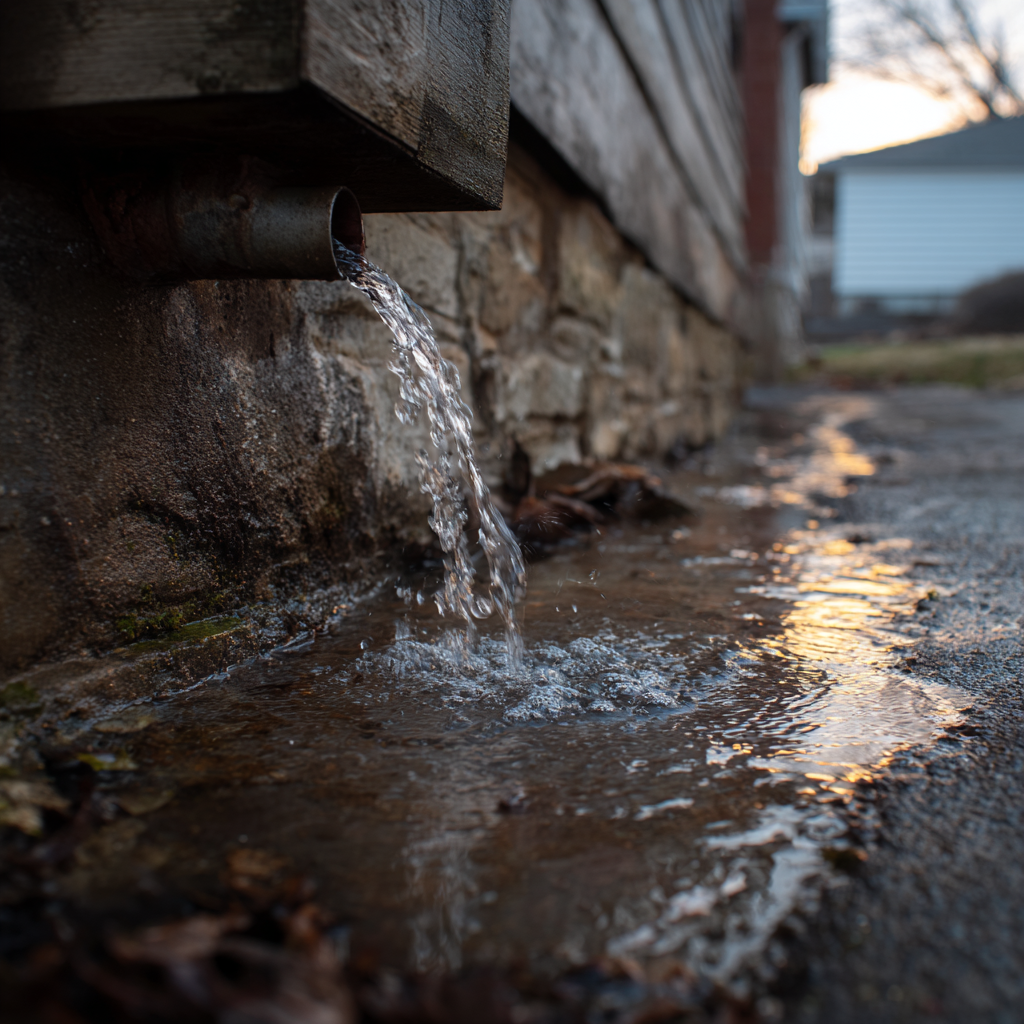
Fixing Drainage Problems in Your Older St. Louis Park Home
You fell in love with the character of older St. Louis Park homes. The established neighborhoods, mature trees, solid construction. Then the first heavy rain came and you saw the problems. Water in the basement. Soggy yard that stays wet for days. Erosion around the foundation. Your downspouts dumping water right next to the house.
The previous owners lived with these issues or band-aided them with temporary fixes. You don't want to spend the next decade dealing with water problems every time it rains. Based on what we've seen throughout St. Louis Park, most drainage issues in older homes are completely fixable with the right approach.
Why Older St. Louis Park Homes Have Drainage Issues
Homes built 40, 50, 60+ years ago were constructed with different drainage standards than we use now. Original grading has settled and changed over decades. Landscaping added over years without considering drainage has created problems. Downspouts and sump pumps discharge in locations that cause damage.
We work on older homes throughout St. Louis Park constantly. These aren't unique problems - they're predictable issues with older properties. The good news is we know how to fix them permanently. The patterns repeat across neighborhoods. Once you understand what's causing problems, the solutions become clear.
The longer you wait to address drainage comprehensively, the more damage accumulates. Basement moisture becomes foundation damage. Soggy areas destroy landscaping. Erosion washes away soil. We've been called to properties after years of drainage damage where homeowners spent thousands on temporary fixes that didn't solve root causes. Better to address everything properly now than patch repeatedly for years.
Step 1: Find a Contractor Who Sees the Whole Picture
Most contractors fix individual symptoms without addressing root causes. They'll extend one downspout or add some rock in a low spot. The problems keep coming back because the underlying issues weren't addressed.
You need someone with knowledge and experience who looks at your yard as a whole system, not isolated problems. At KG Landscape, we assess how water moves through your entire property. Where does it come from? Where does it go? What's working and what isn't? We make a plan that ensures everything drains properly long-term.
We've worked on dozens of older St. Louis Park homes. The issues are similar - poor grading, inadequate systems, band-aid fixes that didn't work. Our approach is understanding the complete picture before recommending solutions. That way you're not spending money on fixes that don't address the real problems.
Step 2: Grade Around the House Properly
This is the foundation of any drainage solution. Proper grade around your house slopes away from the foundation - minimum 6 inches drop in the first 10 feet. This prevents water from flowing toward your basement or pooling against the foundation.
We assess existing grades around your foundation on older homes constantly. Often we find areas where grade slopes toward the house or is too flat. Settlement over decades has changed original grading. Landscaping added without considering drainage has created problems. Mulch beds built up over years have actually raised grades near the foundation.
Getting foundation grading right prevents basement water and protects your foundation from water damage. Everything else builds on this. If water is flowing toward your house, nothing else we do will fully solve your drainage problems. We regrade around foundations to create proper slope away from the house. This is often the single most important fix.
Step 3: Ensure the Yard Drains Properly
Beyond the foundation, the whole yard needs proper drainage. Low spots where water collects become soggy unusable areas. Poorly graded yards send water where you don't want it - toward patios, into garden beds, creating muddy areas you can't use.
We assess overall yard grading and drainage patterns. Where does water naturally flow? Where does it collect? Are there high spots and low spots creating problems? Sometimes regrading solves issues. Sometimes we need French drains to intercept subsurface water. Sometimes catch basins at collection points. Sometimes swales directing water to appropriate discharge areas.
The goal is water moves through your yard appropriately without pooling or causing damage. We've regraded countless St. Louis Park yards on older properties. Proper yard grading makes properties actually usable instead of having areas you avoid because they're always wet.
Step 4: Fix Downspout and Sump Pump Discharge
Downspouts dumping water right next to your foundation cause massive problems. All that roof water concentrates at one point. It pools against the foundation, creates soggy areas, erodes landscaping, and often ends up in your basement. Same problem with sump pump discharge dumping right at the foundation - you're pumping water out of the basement only to have it soak back in.
These concentrated water sources overwhelm inadequate drainage. Even if your grading is decent, dumping hundreds of gallons in one spot creates problems.
Underground downspout systems move water away properly. We install pipes carrying downspout water away from the foundation and discharge it where it won't cause problems - to the street, storm sewer, or back corner of the yard where that water can disperse safely.
Underground sump pump drainage pipes do the same thing. We run pipes from your sump pump discharge far from the house so that water can't come back. We install these systems throughout St. Louis Park. Eliminating concentrated discharge near your foundation solves a huge percentage of drainage issues.
How Everything Works Together
Comprehensive drainage systems have multiple components working together. Foundation grading prevents water from reaching the house. Yard grading moves surface water appropriately. Underground downspouts and sump discharge handle concentrated flows from roof and basement. French drains intercept subsurface water before it causes problems. Catch basins collect water at low points.
Everything works as an integrated system. We've designed complete systems on older St. Louis Park properties where each component supports the others. When one piece is missing, the whole system doesn't work as well. That's why comprehensive planning matters more than individual fixes.

Determining Priority and Phasing Your Improvements
Not every homeowner can or should do everything at once. We help determine order of priority based on what's causing the most damage, what needs to happen first to prevent ongoing problems, and what can wait without making things worse.
The critical thing is never working backwards on drainage. If you're planning a patio, foundation landscaping, or pool later, we account for that now in the drainage design. We give you long-term vision ensuring your goals are met the smartest way. Design the complete system, implement in logical phases. Each phase is functional while allowing future additions.
Common phasing we use: Phase 1 focuses on foundation protection - grading around the house, underground downspouts, sump pump discharge away from foundation. This protects your biggest investment immediately. Phase 2 addresses yard drainage - regrading problem areas, French drains where needed, catch basins at collection points. This makes your yard usable. Phase 3 integrates drainage with planned landscaping - ensuring new features work with the overall drainage system.
This phased approach lets you address priorities first while planning long-term. You're not spending money twice because we designed everything properly from the start.
Working on Older St. Louis Park Homes
We've worked on older homes throughout St. Louis Park with inherited drainage issues. We've done complete system approaches where we address foundation grading, underground downspouts and sump discharge, yard drainage with French drains, and catch basins all at once. We've also done many phased projects where homeowners start with foundation protection and add comprehensive yard drainage in later seasons when budget allows.
We coordinate drainage work with planned future landscaping so everything integrates properly when homeowners are ready for those projects. Some homeowners know they want a patio or foundation plantings eventually. We design drainage accounting for those plans so there's no rework needed later.
The specific approach varies by property, but the planning process is consistent - understand the complete drainage picture, design comprehensive solutions, execute in whatever timeline makes sense for the homeowner's situation and budget.
Why Band-Aid Solutions Don't Work
Previous owners or contractors often patch symptoms without addressing root causes. They extended one downspout but not others. Added small amounts of rock without proper drainage systems. Spot-fixed one area while ignoring overall drainage patterns creating the problems.
These temporary fixes don't address why water is causing problems. You end up spending money repeatedly on issues that keep coming back. We've been called to properties where homeowners spent thousands over years on patches. A comprehensive approach done right costs less than ongoing band-aids that don't solve anything.
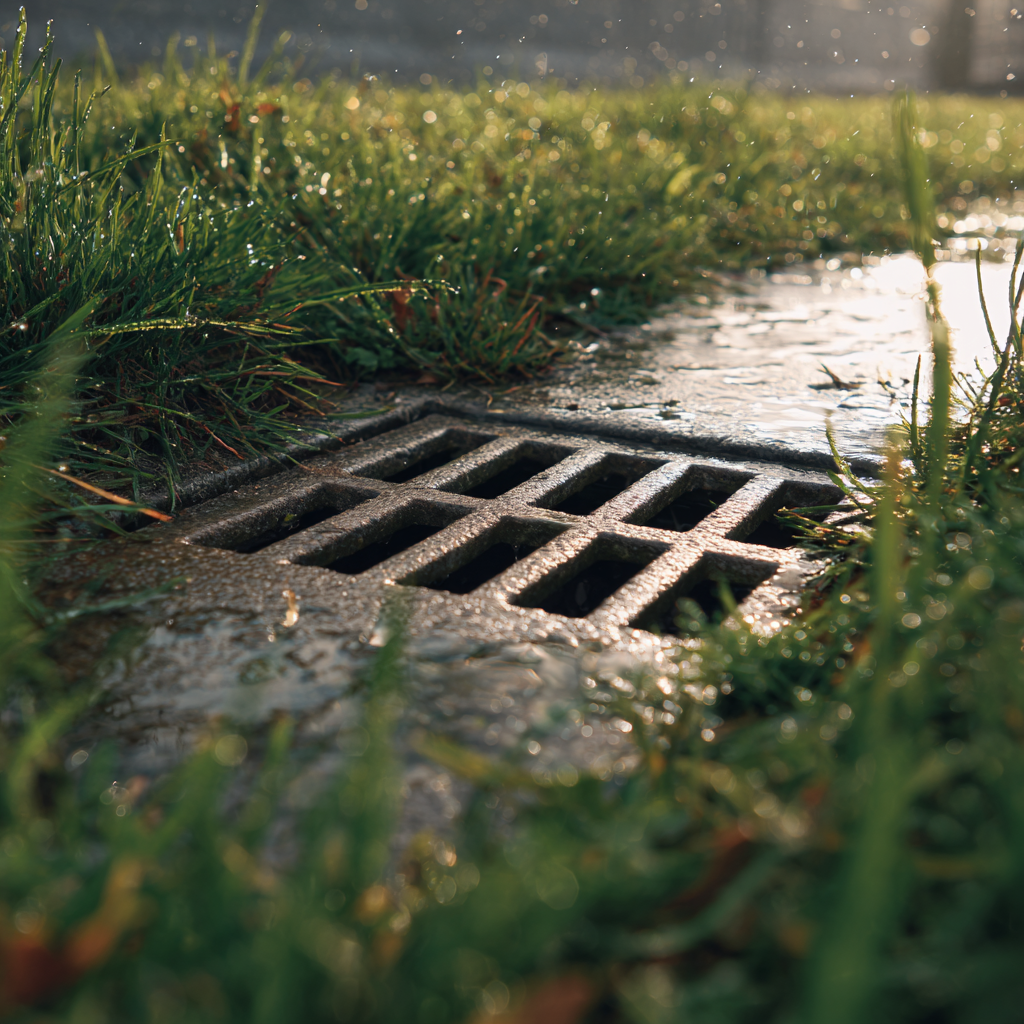
St. Louis Park Specific Considerations
Clay soils common in St. Louis Park don't absorb water quickly. Our drainage systems need to move water, not depend on infiltration that won't happen in clay conditions. We design for local soil realities.
Older neighborhoods have mature trees and established landscapes worth preserving. We work around existing features while fixing drainage. Property characteristics affect our approach - we've done this throughout St. Louis Park and understand what works in these neighborhoods.
We handle city requirements around drainage discharge, grading permits when needed, and coordination with St. Louis Park. Know what's required and how to navigate approvals.
The Assessment Process
We walk your property assessing current drainage issues. Look at grading around foundation. Evaluate yard drainage patterns. Check downspout and sump pump discharge. Identify problem areas and root causes.
We discuss your plans for the property. Are you doing landscaping projects? Adding hardscaping? Planning improvements? We factor all of this into drainage planning.
Then we create a comprehensive plan addressing everything. Provide options for doing all at once or phasing based on budget and priorities. You understand what needs to happen and why. No surprises, no guessing, just clear plan forward.
Put Drainage Problems Behind You
Older homes come with drainage issues - that's reality when you buy a house built decades ago. But you don't have to live with those problems. Comprehensive drainage solutions fix issues permanently.
Foundation grading, yard drainage, underground downspout and sump systems working together create properties that function properly. Strategic phasing lets you address priorities first while planning long-term. Never working backwards means your future landscaping plans integrate properly with drainage from the start.
We've helped St. Louis Park homeowners put drainage problems behind them for good. After we fix drainage comprehensively, the problems are solved. No more worrying every time it rains. No more wet basement or soggy yard. Your property works the way it should. We've heard from homeowners years after projects - drainage still working perfectly. That's the difference between patches and permanent solutions.
Time to focus on enjoying your home instead of dealing with water issues every season.
Dealing with drainage problems in your older St. Louis Park home? Contact KG Landscape for a comprehensive assessment. We'll evaluate your entire property, create a plan that fixes everything, and help you determine the smartest approach for your situation.
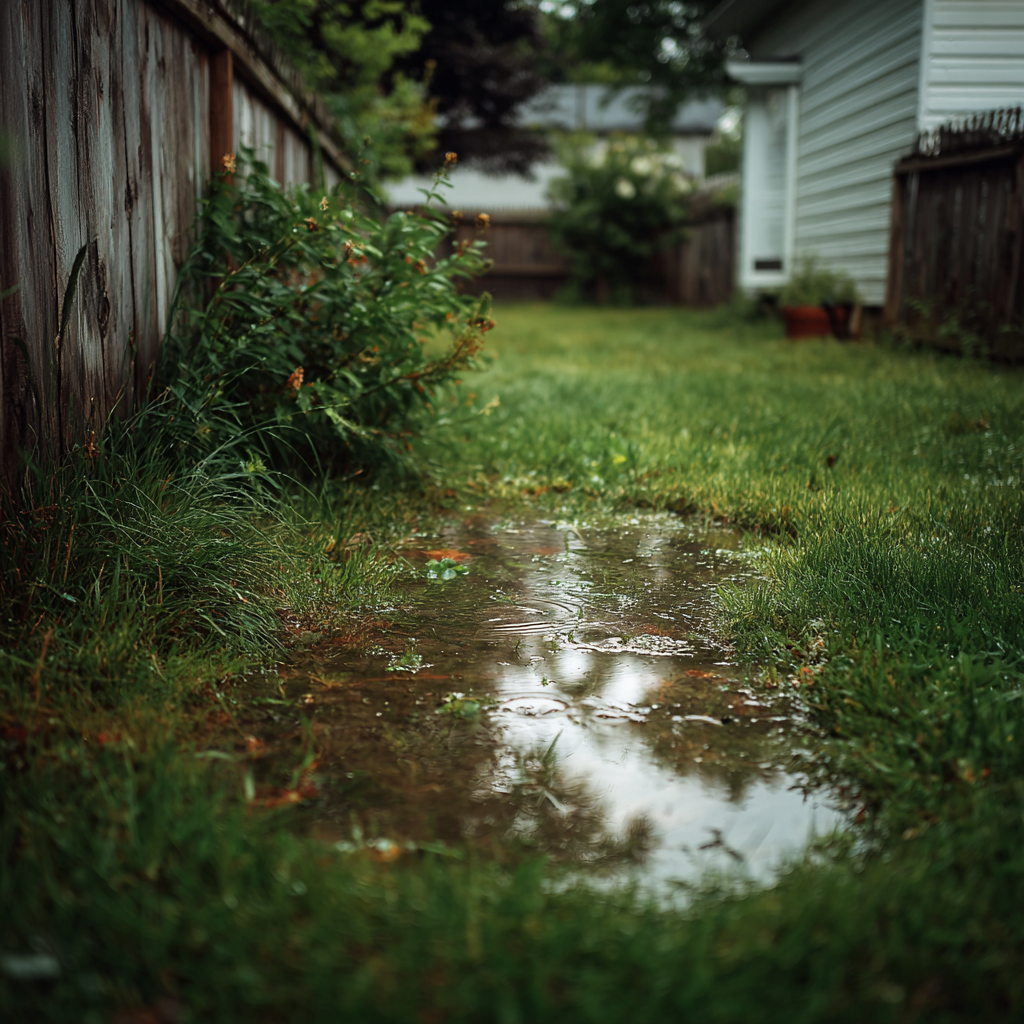
Frequently Asked Questions
How much does it cost to fix drainage problems in an older home?
Costs vary based on severity and scope. Foundation regrading might run $2,000-$5,000. Underground downspout systems typically cost $150-$300 per downspout. Comprehensive yard drainage with French drains and catch basins ranges $5,000-$15,000 depending on property size and issues. Complete systems addressing everything might be $10,000-$25,000. Phasing lets you spread investment. We provide detailed estimates after assessing your specific property so you know exactly what you're looking at.
Should I fix drainage before doing other landscaping projects?
Yes, always. Poor drainage destroys landscaping investments. If you install a patio without proper drainage, water problems damage or undermine it. Foundation plantings fail in soggy soil. We've seen homeowners spend thousands on landscaping only to have drainage issues ruin it. Fix drainage first, then landscape with confidence. Or work with us to integrate drainage with landscaping projects so everything is coordinated from the start.
Can drainage problems be fixed in phases or does everything need to be done at once?
Drainage can absolutely be phased if designed properly from the start. We create comprehensive plans showing complete solutions, then help you prioritize what's most urgent. Foundation protection typically comes first. Yard drainage can follow. The key is designing the whole system initially so each phase integrates properly. This prevents working backwards or redoing things later. Each phase should be functional while allowing future additions.
How do I know if I need underground downspouts vs. just extending them?
If extending downspouts moves water away from your foundation without creating problems elsewhere, that can work. But often extended downspouts dump water that creates soggy areas, erosion, or just moves problems around your yard. Underground systems move water completely away - to the street, storm sewer, or designated discharge areas where it can't cause issues. We assess where water can safely discharge and recommend appropriate solutions for your property.
Will fixing drainage damage my existing landscaping?
Installation requires some disruption - excavating for pipes, regrading areas, installing drainage systems. We work to minimize impact on valuable plantings and established landscapes. Sometimes we temporarily relocate plants and restore them after. Surface evidence of installation typically heals within one growing season. The alternative is ongoing drainage problems destroying landscaping slowly over time. Better to have temporary disruption during installation than permanent damage from water issues.
